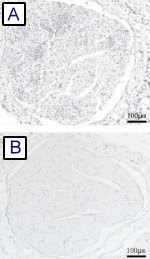I would like to thank Meghan Coakley from University College Cork for alerting me to a new publication referencing our Chicken NSE (Neuron-Specific Enolase) and Tuj 1 (Neuron-specific class III beta-tubulin) antibodies.
Here's her feedback: "Just letting you know we published our paper using the beta-III-Tubulin and NSE antibodies you supplied to us – Timmons et al., Neuroscience Letters, Oct 1, 2009 [Epub ahead of print]. The antibodies were excellent and I’m sure we’ll be using Neuromics again in the future."
Timmons S, Coakley MF, Moloney AM, O' Neill C. Akt signal transduction dysfunction in Parkinson's disease. Neurosci Lett. 2009 Oct 1. [Epub ahead of print].
Abstract: Significant attention has been drawn to the potential role of defective PI3-kinase-Akt (PKB) signalling in Parkinson's disease (PD) neurodegeneration and to the possibility that activation of Akt may provide neuroprotection in PD. However, little knowledge exists on the integrity of the Akt system in PD. Results of the present study show diminished levels of both total and active phospho(Ser473)-Akt in the brain in PD. This was evident by western blot analysis of midbrain fractions from PD compared to non-PD control brain, but more specifically by immunofluorescence microscopy of the substantia nigra pars compacta (SNpc). Here, double immunofluorescence microscopy found Akt and phospho(Ser473)-Akt to be expressed at high levels in tyrosine hydroxylase (TH) immunopositive dopaminergic neurons in control human brain. Selective loss of these neurons was accompanied by a marked decrease of Akt and phospho(Ser473)-Akt expression in the PD brain, however Akt and active phospho(Ser473)-Akt are still evident in degenerating dopaminergic neurons in the disease. This suggests that it may be possible to target neuronal Akt in advanced PD. Converse to the marked loss of neuronal Akt in PD, increased Akt and phospho(Ser473)-Akt levels were observed in small non-TH positive cells in PD SNpc, whose increased number and small nuclear size indicate they are glia. These findings implicate defective Akt as a putative signalling pathway linked to loss of dopaminergic neurons in PD.
Other Reagents to Consider:
Tuj 1 (Neuron-specific class III beta-tubulin)-Mouse Monoclonal
Neuron/Glial Marker Antibodies
Neurotrophins-Neuron/Glial Marker Proteins
Neurodegenerative Disease Research Antibodies
Neurodegenerative Disease Research Proteins
Stem Cell Research Reagents
Scientists grow retina cells from skin-derived stem cells
-
WASHINGTON - University of Wisconsin-Madison researchers have successfully
grown multiple types of retina cells from two types of stem cells, giving
new ho...
14 years ago




